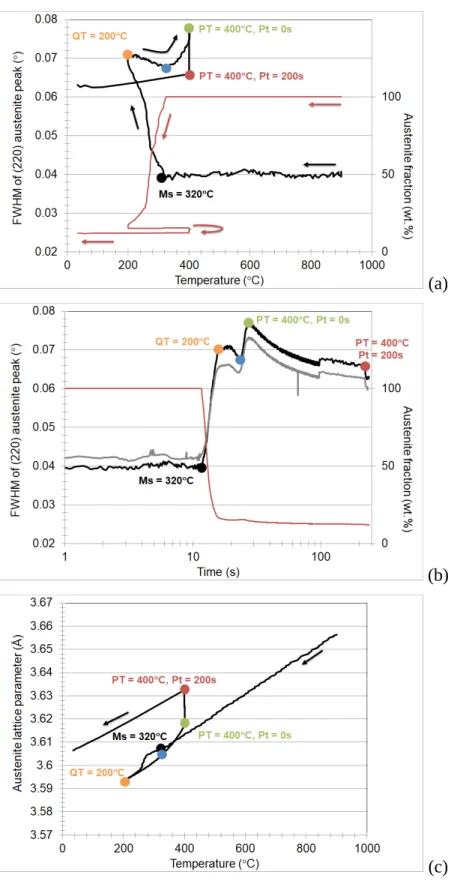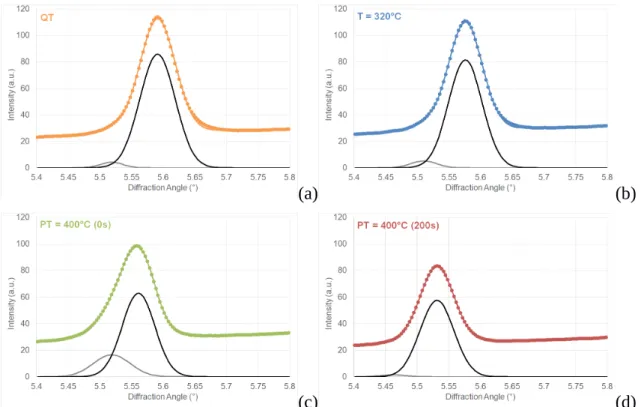Carbon heterogeneities in austenite during Quenching & Partitioning (Q&P) process revealed by in situ High Energy X-Ray Diffraction (HEXRD) experiments
16
0
0
Texte intégral
Figure



![Table 1: Comparisons between the mean/max carbon compositions measured by APT [9] and HEXRD (this paper) on two samples, after 0s and 200s of partitioning respectively](https://thumb-eu.123doks.com/thumbv2/123doknet/14439242.516611/14.892.83.772.208.487/table-comparisons-carbon-compositions-measured-samples-partitioning-respectively.webp)
Documents relatifs
Frequency of 1’s in the Alleles in a Locus (0.5, 0.04) (0.5, 0.02).
les équations (2a) sont triviales, il existe une autre méthode plus
The virgin effect (a delay of the phase transition on first cooling) and associated variation of lattice parameters are analyzed on the assumption of elastic constraints imposed on
On rappelle les théories (i.e. ensembles
En permutant A et B dans la question 3, on voit que e séquent n'est pas prouvable
[r]
[r]
In this paper, by coupling in situ High Energy X-Ray Diffraction (HEXRD) experiments and Transmission Electron Microscopy (TEM), we give some clarification regarding the